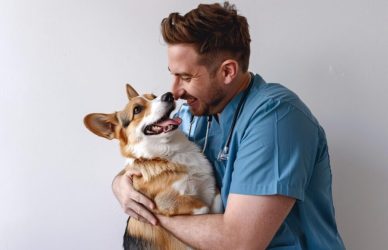March 8th is International Women’s Day. In the last 30-40 years, women have gone from a small minority in the vet profession to a large majority: nearly 60% of practising vets registered with the RCVS.
What’s more, the gender gap is growing: 75% of 26-30 year old vets and nearly 80% of new vet med students are female. How did this reversal happen–and what does it mean for the future?
The pioneers
Aleen Cust became the first woman to achieve MRCVS status in 1922, three years after the 1919 Sex Disqualification Act made it legal for women to enter the profession. But she had actually been a qualified, practising vet for 22 years.
After receiving a glowing testimonial from the founder of Edinburgh veterinary school, Aleen won a job with a practice in Ireland in 1900. She remained in Ireland, riding side-saddle to visit her patients, until 1915, and spent the war volunteering her services as a vet for the horses on the western front.
From the 1920s, more women began to enter the vet profession, but still accounted for less than 5% of vets by 1960. RVC graduate Mary Branker founded The Society of Women Veterinary Surgeons in 1941 to promote the interests of women in the field.
But by 1990, numbers of women had grown so dramatically that Mary and her colleagues decided to disband the society–it was no longer needed. In under a century, a single woman became a majority. Why?
Many reasons have been suggested for this dramatic shift–although most of them are only speculative.
Why more women?
- Equal opportunities. The Sex Discrimination Act of 1975 established the principle of equal opportunities for women, and the Equality Act of 2006 strengthened it, requiring employers to actively promote equal opportunities instead of leaving it to individuals to challenge unfair practice.
- More role models. The increase in female role models, not only in the vet profession but also in other physically demanding roles, gives women the confidence that they can do it.
- Improved conditions. Improvements in working conditions and advances in chemical restraint of animals have made vet work more appealing for women.
Why fewer men?
- Lower grades. Boys, on average, get lower grades at school than girls, meaning they have less chance of getting into vet school.
- Fewer top jobs. Since men are still expected to be leaders (more on that in a minute), the decline in private practices and opportunities to become the owner of a practice may be putting off male vets.
- Just plain sexism. The more a career becomes associated with women, the less it appeals to men, creating a self-reinforcing cycle.
The other gender gap
While women may be winning on numbers, there are other significant areas where they still lose out.
- Women vets earn on average 21% less than comparably experienced men. Even among new grads, women are offered 11% less than men for their first role.
- Men still outnumber women in most categories of RCVS qualifications–the higher the qualification, the more male-dominated it is. Only CertAVP holders and, unsurprisingly, DipAVN holders are predominantly women.
- Men also dominate the most senior jobs. Twice as many men are sole principals than women, three and a half times as many are partners and four times as many are directors.
The worry is that this could lead to lower pay across the profession and a worsening shortage of candidates for business roles.
However, these problems will resolve themselves when women vets finally achieve pay parity and an equal shot at career progression. As Aleen Cust would agree, they’ve deserved it for long enough.








